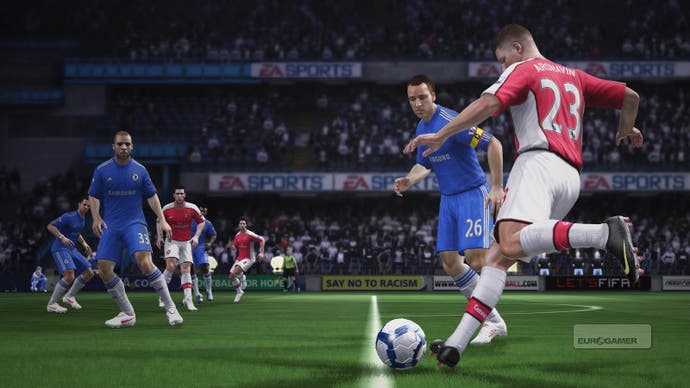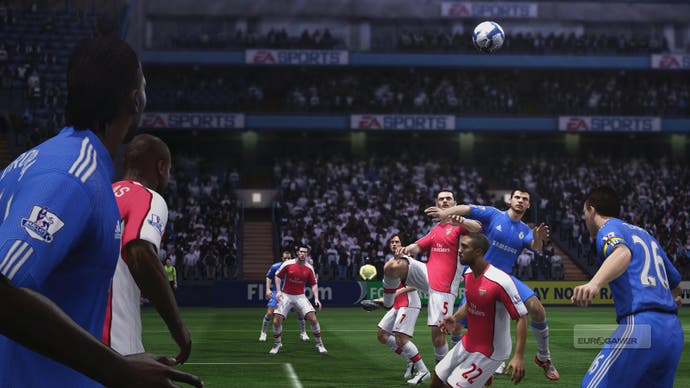FIFA 11
Personality+! Pro Passing! Er, custom chants?
While other 10-million-selling game developers throw their lawsuits out of the pram and cuddle up to new sugar daddies, one of the biggest and most bankable development teams in the world quietly gets on with business in Vancouver.
EA Canada's FIFA series will break the 100 million sales barrier with this year's iteration, FIFA 11, and so far the only casualty has been EA Sports boss Peter Moore's credit card: after the last version clinched a 90 rating on Metacritic, Moore threw the team a massive party.
With Konami regrouping for the impressive-sounding Pro Evolution Soccer 2011, however, this is no time to get sloppy, so initially it's a little surprising to discover that FIFA 11's headline features are Personality+ and Pro Passing - systems that emphasise player attributes a bit more and make passing more realistic. Is that it?
Both features are more dramatic than they sound. "We want to use all of our player attributes more fully," creative director Gary Paterson says of Personality+, before explaining that in FIFA 10 the key stats for each player were shot power, strength, speed and acceleration.
FIFA 11 will expand on that so things like dribbling, passing, work rate, tracking back and defending are more personal. There's a huge difference in how Andrei Arshavin and Sol Campbell dribble, for example, but in the past it might just be recognised visually; now the time it takes between touches, the length of stride, the ability to link multiple turns and other attributes will be recognised in gameplay.

This may be particularly interesting in defence, which Paterson acknowledges has "never been done that well" in FIFA. "We had some feedback last year that it felt like strikers could still defend and tackle as well as defenders. We're working on ways in which we can eliminate that," he explains. For example, a good dribbler will be able to cut inside a low-skilled defender, but a higher-skilled defender with a greater tackle range may not fall for it.
Goalkeepers have been a pretty interchangeable bunch in the past, but Personality+ aims to sort that out with different save styles and agility attributes. Jose Reina may be back in his feet almost instantly after stopping a low shot, for instance, whereas an older keeper might not.
With personality making a bigger difference, the EA Canada art team has been putting greater effort into making players recognisable, not just through facial modelling - although that is an ongoing process - but by implementing new body types and animations.
There are specific body types for the likes of Peter Crouch and Shaun Wright-Phillips, for example, and where the range of available animations and body types hasn't been sufficient to support particular players, artists have hand-crafted exceptions - notably Cristiano Ronaldo and Lionel Messi.

The area where Personality+ is likely to make its biggest impact, however, is in the new Pro Passing system, designed to lessen the effect of "ping-pong passing" - a pet hate of FIFA fans which allows players to pass the ball quickly to the halfway line and beyond without giving the other guy a look in.
Ping-pong passing "reduced the emotion and sense of achievement of getting a scoring chance or scoring a goal," according to Paterson, and he believes that Pro Passing, which comes in two parts, is the answer.
The first part is giving the player a power bar for passing, but then also providing feedback. "Say the pass is 20 yards and you only power up enough for 15 yards - it's still going to go to the player, but it's going to be a little softer, which will potentially allow defenders in to intercept it, and will at least slow down the build-up," says Paterson. A HUD element will then show you how much power would have been optimal to maintain momentum so you know better next time.


.png?width=291&height=164&fit=crop&quality=80&format=jpg&auto=webp)




.jpg?width=291&height=164&fit=crop&quality=80&format=jpg&auto=webp)
